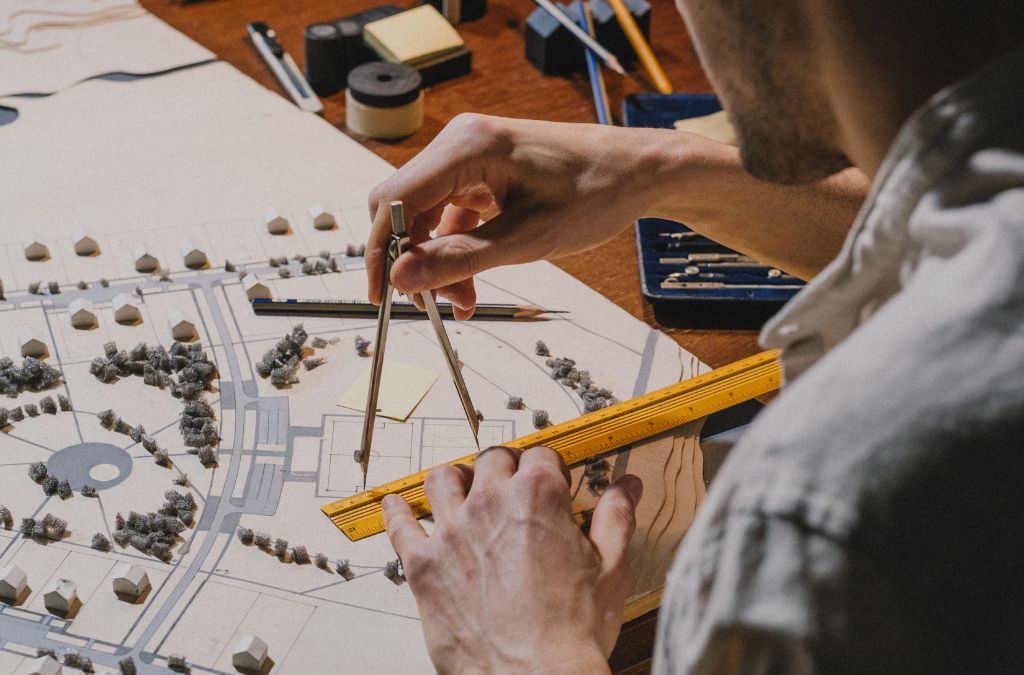-
Table of Contents
Sustainable Design: The Future of Architect
The architectural industry is undergoing a significant transformation. As environmental concerns become more pressing, sustainable design is emerging as a pivotal approach in shaping the future of architecture. This article explores the principles, benefits, and real-world applications of sustainable design, providing valuable insights into how it is revolutionizing the built environment.
Principles of Sustainable Design
Sustainable design is grounded in several key principles that aim to minimize the environmental impact of buildings while enhancing their functionality and aesthetics. These principles include:
- Energy Efficiency: Reducing energy consumption through the use of renewable energy sources, efficient insulation, and smart building technologies.
- Water Conservation: Implementing systems that reduce water usage, such as low-flow fixtures, rainwater harvesting, and greywater recycling.
- Material Selection: Choosing sustainable, non-toxic, and locally sourced materials that have a lower environmental footprint.
- Indoor Environmental Quality: Ensuring good air quality, natural lighting, and thermal comfort to promote the well-being of occupants.
- Site Optimization: Designing buildings that harmonize with their surroundings and make efficient use of the land.
Benefits of Sustainable Design
Adopting sustainable design practices offers numerous advantages, both for the environment and for building occupants. Some of the key benefits include:
- Environmental Impact: Sustainable buildings reduce greenhouse gas emissions, conserve natural resources, and minimize waste.
- Economic Savings: Energy-efficient buildings lower utility costs and can increase property values.
- Health and Well-being: Improved indoor air quality and natural lighting contribute to the physical and mental health of occupants.
- Resilience: Sustainable buildings are often more resilient to climate change and natural disasters.
Case Studies in Sustainable Design
Several notable projects exemplify the successful implementation of sustainable design principles. These case studies highlight innovative approaches and the positive outcomes achieved.
The Edge, Amsterdam
The Edge in Amsterdam is often cited as one of the most sustainable office buildings in the world. It features:
- Energy Efficiency: The building uses solar panels and an aquifer thermal energy storage system to achieve a net-zero energy status.
- Smart Technology: An advanced building management system optimizes energy use and enhances occupant comfort.
- Material Selection: Sustainable materials were used throughout the construction process.
Bullitt Center, Seattle
The Bullitt Center in Seattle is another exemplary project, known for its ambitious sustainability goals. Key features include:
- Net Positive Energy: The building generates more energy than it consumes through solar panels and energy-efficient systems.
- Water Conservation: A rainwater harvesting system and composting toilets significantly reduce water usage.
- Healthy Materials: The building avoids the use of toxic materials, promoting a healthier indoor environment.
Statistics on Sustainable Design
Several statistics underscore the growing importance and impact of sustainable design in architecture:
- According to the World Green Building Council, green buildings can reduce energy consumption by up to 50% compared to conventional buildings.
- The U.S. Green Building Council reports that LEED-certified buildings have saved over $1.2 billion in energy costs since 2015.
- A study by Dodge Data & Analytics found that 60% of global construction firms expect to have over 60% of their projects certified as green by 2021.
Challenges and Future Directions
While sustainable design offers numerous benefits, it also presents certain challenges. These include higher upfront costs, the need for specialized knowledge, and regulatory hurdles. Despite these obstacles, the future of sustainable design looks promising, with several trends shaping its evolution:
- Integration of Smart Technologies: The use of IoT and AI to optimize building performance and energy use.
- Biophilic Design: Incorporating natural elements into buildings to enhance occupant well-being and connection to nature.
- Adaptive Reuse: Repurposing existing structures to reduce the environmental impact of new construction.
Conclusion
Sustainable design is not just a trend but a necessary shift in the architectural industry. By embracing principles that prioritize energy efficiency, water conservation, and the use of sustainable materials, architects can create buildings that are not only environmentally friendly but also economically viable and beneficial to human health. As demonstrated by projects like The Edge and the Bullitt Center, sustainable design is already making a significant impact. With continued innovation and commitment, it holds the promise of a more sustainable and resilient built environment for future generations.
